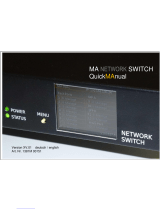
12
Installation
8.7 Installation
If used in an aggressive environment, we recommend con-
veying all free pneumatic connections into a neutral atmo-
sphere with the aid of a pneumatic hose.
WARNING!
Risk of injury from improper installation!
Non-observance of the tightening torque is dangerous as the product
may be damaged.
▶ Observe the tightening torque (see “Tab. 1”, page 13).
8.7.1
Installation of the valve body type 2103
and 2104
Welded bodies
→ Weld valve body in pipeline system.
Other body versions
→ Connect body to pipeline.
8.7.2
Installation tank bottom valve Type 2105
For further information on containers and welding instructions,
please refer to the standard ASME VIII Division I.
It is recommended
• to weld the valve prior to the container installation.
However, it is possible to weld the valves to ready-
assembled containers.
• to weld the valve in the center of the drain to ensure
optimum draining of the container.
Prior to welding, please check to ensure that:
• The tank bottom valve does not collide with other equipment compo-
nents and assembly/disassembly of the actuator is always possible.
• A minimal distance between two welding joints three times the
thickness of the container wall is adhered to.
The hole diameter in the tank and the housing flange must be the
same size. The housing flange has two welded edges to facilitate
positioning and welding of the valve. The welded edges are approx.
3 mm wide. If the container wall is more than 3 mm thick, it must
be ground down so that the discharge surface is touching the
housing flange surface.
Prior to commencing the welding process, check the
charge number indicated on the supplied manufacturer‘s
certificate 3.1.B.
Please observe the applicable laws and regulations of
the respective country with regard to the qualification of
welders and the execution of welding work.
Procedure:
→ Position the flange into the hole so that the flange surface is
tangent to the drain surface.
→ Tack 4 welding points and check the position of the valve.
→ Weld the valve evenly to the inside and outside of the container,
with gas being supplied and using welding material compatible
with the valve‘s stainless steel 316L.
→ Allow the welds to cool down before burnishing and cleaning
them according to the applicable specifications.
Observance of these instructions will prevent deformation and
tension inside the containers.
english
Type 2103, 2104, 2105





















